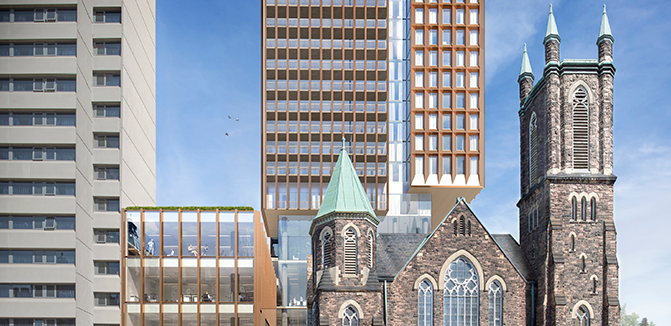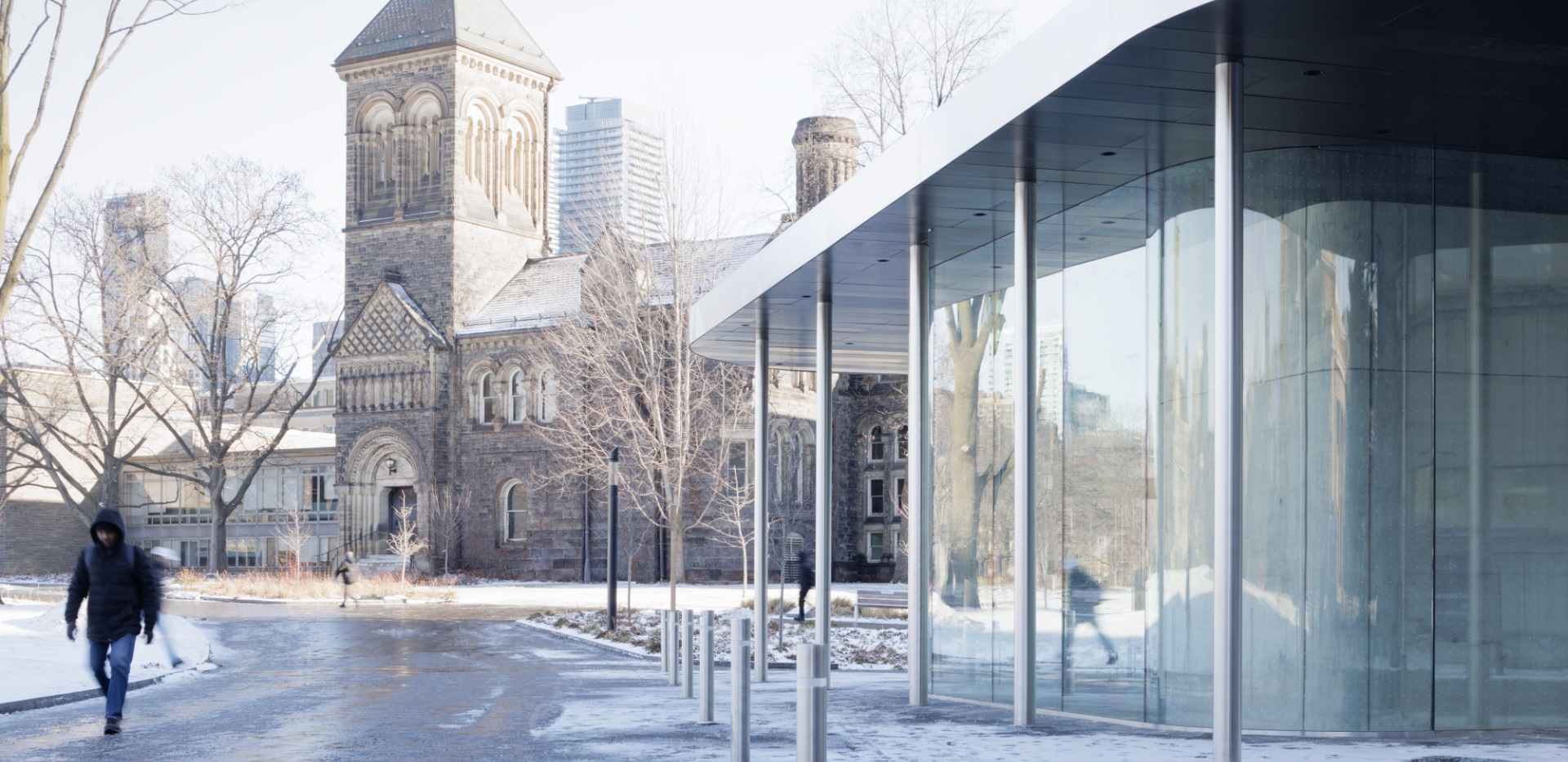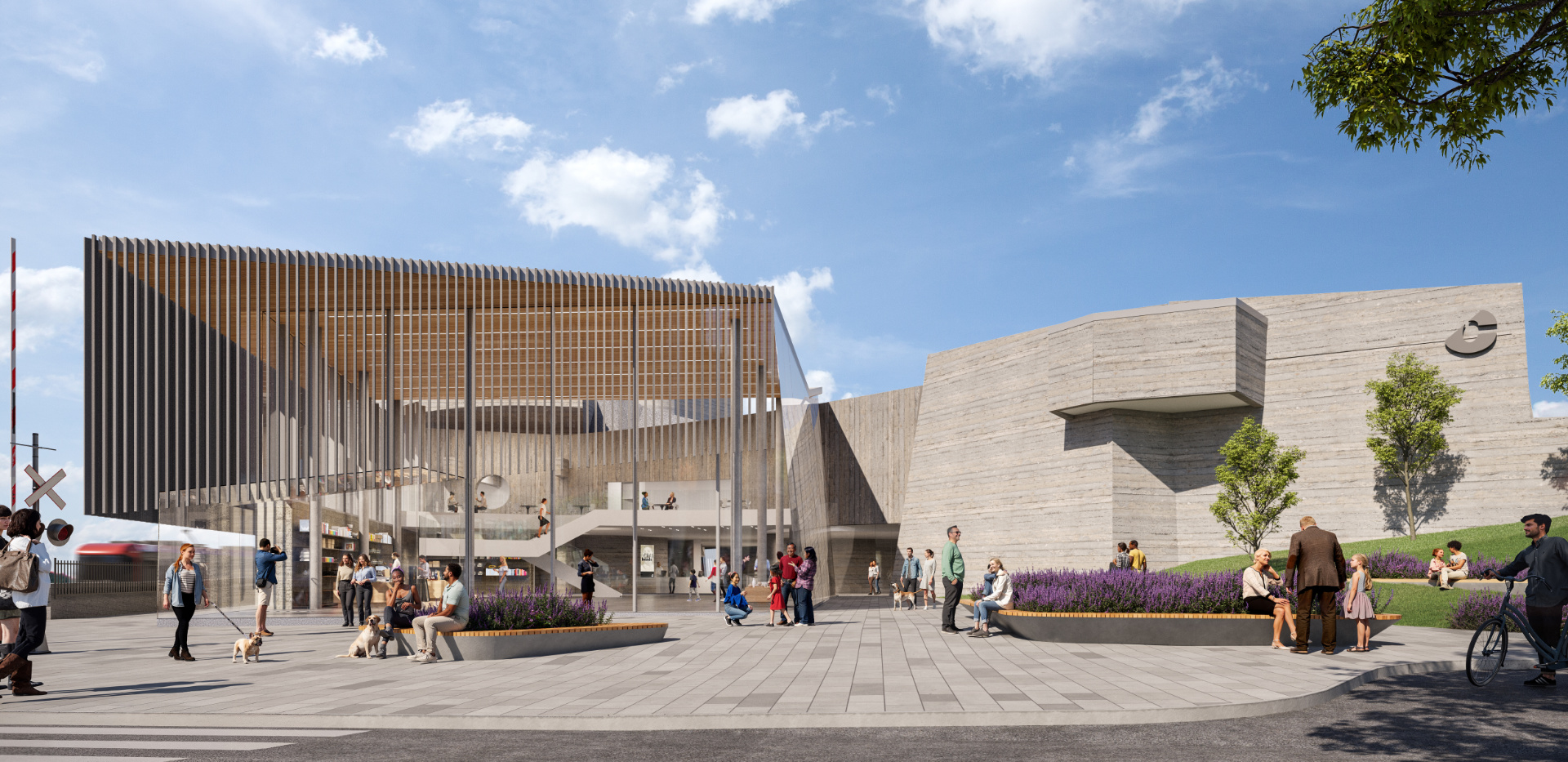Toronto’s Design Review Panel provided “invaluable commentary” for Bloor Street United Church: 300 Bloor West – Marianne McKenna

Article content
Click here to view Toronto Star
by Donovan Vincent
Will a new street in a proposed housing development be good for cyclists, pedestrians, cars and buses?
Is the design of a new residential or commercial tower too bulky, and does it blend with plans for the podium below?
Would a shiny new condo building work well behind an old church that has heritage value?
These are the kinds of questions that a little-known but powerful group of Torontonians have been deliberating over and advising the city on for nearly 12 years.
The task of Toronto’s Design Review Panel, a group of architects and urban designers that has been providing independent advice to Toronto’s city planners since 2007, is to “coax, hurry, nudge and cajole” developers and their design teams to strive for design excellence when it comes to their buildings, says Michael Leckman, vice-chair of the panel and a principal with Diamond Schmitt Architects.
“To make a good city you have to stay focused on the public realm,” says Leckman, noting a key mandate for the 17-member group is providing input, through city planners, to developers on ways to improve designs that affect public areas — streets, sidewalks, public parks and open spaces.
The group began as a pilot project under then Toronto mayor David Miller. The projects they review — Leckman estimates the panel sees about 15 per cent of the projects that go through the city’s pipeline — are those that don’t fit neatly into the criteria outlined in the city’s Official Plan, or in guidelines for zoning, tall buildings, avenues and midrise buildings and other areas.
Waterfront Toronto has a design review panel, as does Toronto Community Housing, and the cities of Ottawa, Brampton, Mississauga, Markham and others.
“We look for ways that proposals are fulfilling the highest ambitions of the city, and what is possible for liveability, walkability, quality of life and a high standard of design,” Leckman says of the Toronto group.
When the panel meets once a month in a committee room at Toronto city hall, they get a brief overview from city planners on the projects on that day’s agenda. They spend about five or six hours poring over proposals, the bulk of which pertain to building designs put forward by private developers.
The panel members will have already been sent a package outlining the background particulars of the project — including images depicting what the developer hopes it will look like, heights, numbers of proposed units in the building if it’s residential, floor plans, rules the city has already put forward for the site, reasons why the developer is proposing the project on the given site, landscaping, energy efficiencies, and what the developer hopes the building will contribute to the area.
During the meetings the proponent also makes a presentation, and the panel asks questions and provides commentary to the city’s planning department through panel chair Gordon Stratford, an architect and urban designer.
After reviewing projects that come before the panel, members vote on it. Even if they vote in favour, the panel will provide a list of criticisms and elements they want improved.
The panel has met more than 100 times and reviewed about 380 projects in its nearly 12 years in existence.
Stratford took the Star on a recent walk to point out a downtown development underway that the panel recently looked at — a project he says the group likes in large part because it will help solidify Toronto as a “place of choice” to build in.
The new CIBC Square, being built at the corner of Bay St. and Lake Shore Blvd., is an example of “thinking outside the box,” Stratford says.
Among the interesting elements of the commercial project is the fact the two glass buildings on Bay will be connected by a .4-hectare park — elevated green space over the rail corridor that connects to Union Station.
“This is an example of finding green space where you didn’t think you would,” Stratford said.
Stratford said the project is part of the current “critical mass” of thinking and activity going on when it comes to innovative design in the city — and his panel is thrilled to be playing a role in that.
Panel member Heather Rolleston, a design architect and principal at the firm Quadrangle, says one recent project members of the group criticized last May was a redevelopment proposal calling for a highrise tower — 73 storeys — at the northeast corner of Carlton and Yonge Sts. because the proposal missed the opportunity to provide a better entrance to the TTC’s College/Carlton subway stop.
“It (the stop) is not working as it currently is. There is a huge pile of people at the (street) corner and it’s uncomfortable. It’s nasty. There’s not enough sidewalk depth to accommodate (the crowd of passengers and pedestrians),” Rolleston said in an interview.
The majority of panel members attending the meeting voted that the project by Northam Realty Advisors, designed by architecture firm IBI Group, be redesigned, she said, adding the panel strongly encouraged the TTC, owners of the proposal and their lawyers to come together and address this matter.
“It was our responsibility to make that happen and we agreed that a hands-off approach was not good enough,” Rolleston explained.
Panel members were somewhat divided on a different redevelopment proposal in September, one that dealt with a heritage structure. The design called for a new residential highrise to be built behind Bloor Street United Church at Bloor St. W. and Huron St.
The design had already gone through a community engagement process with local residents, which lowered the building from 38 to 28 storeys and made it a little wider — but the panel’s opinion was the latter scenario crowded the church.
By a five to two margin the panel voted to support the project, advising the original dimensions worked better.
“The general opinion on the panel was is there a way to … head in a direction closer to where it was (originally) so (the tower) wasn’t crowding the church, allowing this beautiful heritage artifact to stand on its own,” Rolleston said.
“That’s not a nice thing for the city to hear,” given the community engagement that took place in this case, noted Rolleston, who voted in support of the first design.
In an email to the Star, Marianne McKenna, founding partner with KPMB, the architects behind the design, said the review panel provided “invaluable commentary” on the project.
“The panel’s input has definitely impacted the proposal to improve the quality of the public realm … where pedestrians come in contact with the human scale of the building,” McKenna added.
Lorna Day, director of urban design in the city’s planning department, says it’s hard to precisely quantify the impact the panel has had, but says the group has played a key role in the “overall trend in the city” toward a better quality of design.
Day says minutes from the panel’s meeting go back to her, her staff, and city planners, and from there into planning reports that make their way to city council.
“The presence of the panel backs up the conversation about the value of good design,” Day says.
Related News
Year in review: Highlights from 2025
December 17, 2025Contemporary Calgary receives Canadian Architect Award of Merit
December 1, 2025
)
)
)